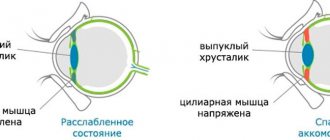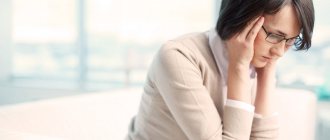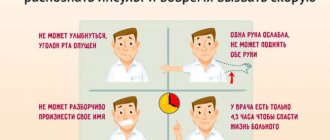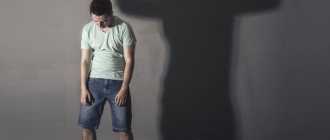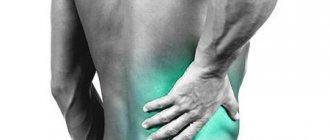Headache in a child
Headache (cephalgia)
among children is one of the five most frequent visits to the doctor. Complaints can begin from the age of two, and, according to pediatricians, already 45-50% of seven-year-old children experience periodic headaches. And at the age of 15 years, up to 80% of children upon examination complain of headaches.
In our country, doctors usually give a child suffering from cephalgia one of the following diagnoses:
- autonomic dystonia syndrome;
- hypertensive-hydrocephalic syndrome (syndrome of increased intracranial pressure);
- instability of the cervical spine;
- consequences of traumatic brain injury (post-traumatic arachnoiditis).
Unfortunately, according to doctors, in 35% of children it is impossible to make a correct diagnosis at all, since it is not possible to classify pain according to the ICD (International Classification of Diseases) criteria. As a result, in many cases, therapy is prescribed that has nothing to do with the true cause of pain and more often has a placebo effect. Fortunately, children have enormous recovery capabilities of the body.
Types of headaches
According to the 2013 International Classification of Headaches in Children, primary and secondary headaches are distinguished. The primary ones include tension headache (up to 40% of the total number of registered complaints in children), migraine (up to 25% in the structure of headaches) and cluster headache (which is more of a casuistry than the norm). Secondary headaches include headaches due to infections (most often upper respiratory tract infections), large tumors, vascular malformations (congenital disorders of the circulatory system), injuries and those associated with psychogenic factors.
Also, headaches can be caused by vision problems, such as myopia, that are not promptly monitored by parents and doctors. In general, cephalgia in children is often secondary.
Based on the manifestations, doctors distinguish:
- acute recurring headache (the most common causes: migraine, epilepsy);
- acute diffuse (infectious etiology, systemic pathology, subarachnoid hemorrhage, meningitis);
- acute localized (sinusitis, trauma, ophthalmological pathology);
- chronic progressive (serious neurological pathology - space-occupying formation or vascular pathology, chronic hydrocephalus, abscesses, intoxication);
- chronic non-progressive (depression, tension headaches, anxiety and other psychological factors);
- mixed headache (migraine plus other causes).
The increase in the prevalence of headaches in children in the last half century, on the one hand, is due to serious changes in lifestyle: an increase in the intensity of stress at school, disturbances in sleep and nutrition, a decrease in physical activity, prolonged periods of time at the computer, and an increase in the number of stressful influences. On the other hand, medical problems related to the lack of timely diagnosis of diseases and effective treatment planning are still relevant.
Features of cephalalgia in children
Let's take migraine, for example. All neurologists who have read JK Rowling's books or watched the film adaptation agree on one thing - the fictional character, Harry Potter, clearly suffered from a common form of migraine called "migraine with aura" (although in a fit of enthusiasm, doctors came up with at least 7 reasons that could cause pain in the character, ranging from subarachnoid hemorrhage to incorrect selection of glasses).
In boys, migraine begins more often at the age of 6–7 years; in girls, the onset of the disease occurs at 10–11 years. At the same time, there is definitely a person in the family who suffers from migraines (if the mother has migraine, the child has a 60–70% chance of having it, if the father has it, 30%; both parents have 90–95%). Children, as a rule, do not have characteristic pain in half of the head and do not have a characteristic “adult” attack. Attacks can be very short (up to a few minutes) and... go away forever with age!
At one time, the media wrote a lot about the fact that actor Daniel Radcliffe also often has seizures, “because of which he has to swallow handfuls of pills.” Even the term “Hogwarts headache” has appeared; it refers to cephalgia associated with an unusual activity for modern children - quickly reading a large amount of information. For example, the weighty books of the prolific writer (the first 309 pages, subsequent ones up to 870), “voraciously devoured” by schoolchildren, turned out to be a difficult test for them.
By the way, do you remember who Harry complained about his headaches to in the book? That's right - no one! Like most children, unfortunately...
Main triggers (attack provocateurs)
Parents need to know that cephalalgia in children is most often provoked by the following factors:
- Stress
(both positive and negative emotions) and muscle tension. By the way, regular aerobic exercise “until the second sweat” - but not “until the seventh”! - strengthens the nervous system well and reduces the number of attacks by at least half. But significant physical activity and pronounced muscle tension (for example, in the neck muscles when reading) - on the contrary, provoke attacks. I already wrote above about “binge reading,” but the same applies to computer and sports hobbies—everything is good in moderation. But some children have a more intensive daily routine than an adult! - Irregular meals.
Lack of a full breakfast or lunch is a very common cause of headaches in children. To significantly reduce the number of attacks, it is necessary to normalize your diet. - Non-compliance with the daily routine.
Doctors call it the "Monday morning migraine." All parents know about the importance of sleep hygiene, but few follow doctors' recommendations in practice. Meanwhile, the correct sleep schedule and a sleep duration of 8–10 hours are very important for effectively helping all children with headaches. A “floating” daily routine is also a pronounced provoking factor for cephalgia. - Some foods
can cause an attack of cephalalgia in children: cheese, chocolate, citrus fruits, fast food, ice cream, aspartame, carbonated drinks with dyes, sausages, smoked meats, yoghurts not suitable for children and almost all products containing caffeine.
It should be noted that a headache in itself is stressful for both the child and his parents, so remember that the anxious anticipation of an attack of pain can also provoke this attack!
Difficulties in diagnosis
Almost until adolescence, a child cannot clearly explain his complaints (pulsating pain? squeezing? pressing? what? - no answer. This is considered a limited description of the headache pattern and makes diagnosis difficult), in addition, children are often confused about the location of the pain.
The doctor cannot use the VAS (Visual Analogue Pain Scale). For a child, giving a 4 or an 8 on this scale can be a completely incomprehensible process or game. He may not complain specifically about a headache, but present some nonspecific complaints (fatigue, darkening of the eyes, nausea), which, when associated with other diseases, can also lead the doctor too far in his assumptions.
First of all, the attentiveness of parents will help in diagnosis. You need to remember (for this it is best to keep a diary) and succinctly tell the doctor how long, over what period (weeks, months) headaches have been observed, with what regularity the headaches hurt, in what way and how severely, where the pain is localized, what exactly affects on its appearance (hunger, physical activity) and weakening, whether the headache is accompanied by other complaints (nausea, dizziness, fear of light and sound), what the child looks like during an attack (pallor, redness of the face, dark circles under the eyes), what medications the child takes . Sometimes you can ask your child to draw his pain. A drawing can tell a specialist a lot.
Should I take my child for an MRI?
It should be noted that in children in whom the neurologist did not find any alarming symptoms during a neurological examination, most often (in 99%) no abnormalities are found during hardware studies (CT, MRI). But don't forget about this single percentage. Therefore, if the doctor insists on neuroimaging, you need to do it as soon as possible.
The absolute indications for MRI are:
- headache for more than 6 months without response to treatment;
- combination of pain with deviations in neurological status;
- night headache with awakenings;
- headache in combination with disturbances of consciousness, vision and vomiting;
- no family history of migraine;
- family history.
When you urgently need to see a doctor
Parents should know that a child’s headache is most dangerous if:
- pain began before age 5 years;
- when the number of attacks sharply (in less than 2 months) increased;
- pain is localized in the occipital region;
- is bursting and sudden in nature;
- has a pronounced intensity.
Don't believe that children don't have strokes! A “thundering” headache that grows to extremely intense within a minute is most often caused by a vascular accident in the brain. The child should be taken to the hospital as quickly as possible.
Ambulances
The need for an anesthetic drug appears if the attack does not go away within 30–40 minutes of rest (for migraines - 20 minutes) or a short sleep, also if the pain increases mildly. It is important to know what medications can be used to relieve pain in children. Suitable medications include ibuprofen (children's Nurofen, etc.) and acetaminophen (paracetamol, etc.) in age-specific dosages. For children over 5 years old, after taking medication (tablets or suspensions, suppositories or injections), it is necessary to take at least 300 ml of liquid.
You cannot use drugs containing acetylsalicylic acid, metamizole sodium, no-shpu and combined analgesics (especially those containing caffeine and phenobarbital), since they are rare in children under 15 years of age, but can lead to quite severe complications. If the headache is not relieved by taking simple analgesics, you need to consult a specialist to select effective and safe therapy. Nootropics and vitamins for headaches act as placebos! Don't stuff your children with them unnecessarily!
Valentina Saratovskaya
Photo thinkstockphotos.com
Products by topic: [product](ibuprofen), [product](nurofen), [product](paracetamol)
First aid for an attack
It is prohibited to give your child any medications on your own without a doctor’s prescription. If parents notice signs of headache or dizziness, they should reassure the child and stay close to him. To alleviate the condition, you should:
- provide bed rest and eliminate all irritants: bright light, TV, gadgets, loud music;
- Give water to drink if you experience nausea; cold water will help reduce its intensity;
- provide fresh air access to the room;
If attacks of dizziness bother your child at night, he should leave a night light on. When he wakes up feeling unwell, fixing your gaze on him will help prevent the condition from getting worse.
If the attack recurs, you must make an appointment with a doctor for examination and treatment.
Causes
- Head injuries
- Inflammatory diseases of the paranasal sinuses (sinusitis, sinusitis, sinusitis)
- Violation of the daily routine with lack of sleep, increased physical and emotional stress
- Malnutrition, anemia
- Weather changes
- Vascular diseases - increased or decreased blood pressure, heart disease, kidney disease, abnormal development of cerebral vessels, etc.
- Worm infestations
- Infectious diseases with ARVI, infectious mononucleosis, meningitis, encephalitis
- Increased intracranial or intraocular pressure
- Visual impairment
If a child complains of frequent headaches, a doctor's consultation is necessary. In Saratov, you can seek qualified medical care at the First Children's Medical Center from a pediatrician: here you can get help from specialists of a narrow profile, and also, if necessary, take the necessary tests or undergo a full examination.
Diagnostic and treatment methods
Diagnosis of headaches in a child at the Clinical Brain Institute uses modern equipment and a team of specialized specialists. When the first symptoms appear, you should consult a pediatrician, and then you may need to consult an ophthalmologist, neurologist, surgeon, or otolaryngologist. To make an accurate diagnosis, a number of examinations are carried out:
- ultrasound diagnostics of cerebral vessels;
- X-ray of the cervical spine;
- MRI of the head is one of the most informative methods;
- electroencephalography - assessment of the functioning of various nervous structures.
Treatment is selected individually. In most cases, the headache goes away with age, but in some patients it persists throughout life. At home, you should provide your child with adequate rest and the required level of physical activity, minimize screen time, and provide adequate nutrition. Drug treatment includes taking analgesics (painkillers), antispasmodics, vitamins and drugs for correcting cerebral circulation. In our clinic you can get more detailed recommendations for the treatment of headaches in children of different ages, depending on the results of the examination.
